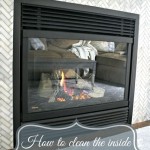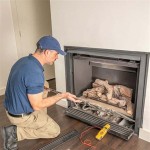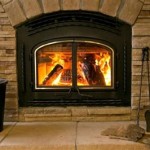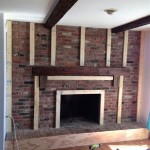Fireplace Hearth Pad: Protection and Aesthetics for Your Home
A fireplace hearth pad, also known as a hearth extension, is a non-combustible surface placed in front of and/or around a fireplace, wood stove, or other heating appliance. Its primary purpose is safety, protecting the surrounding floor and walls from sparks, embers, and radiant heat generated by the appliance. Beyond safety, a hearth pad can also contribute to the overall aesthetic appeal of the room, serving as a decorative element that complements the fireplace and interior design.
The need for a hearth pad is generally dictated by building codes and manufacturer specifications. These regulations are designed to minimize the risk of fire and ensure the safe operation of heating appliances. The specific requirements for size, material, and placement vary depending on the type of appliance and the type of flooring in the space.
Hearth Pad Functionality: Ensuring Fire Safety
The fundamental function of a fireplace hearth pad is to provide a non-combustible barrier between the heat source and the surrounding combustible materials. This includes flooring made of wood, carpet, vinyl, or other flammable materials. A stray spark or ember landing on a combustible surface can quickly ignite, leading to a fire hazard. The hearth pad acts as a shield, preventing such accidental ignitions.
The size and extent of the hearth pad are crucial factors in its effectiveness. Building codes specify minimum dimensions for the hearth extension, typically extending a certain distance in front of the fireplace opening and to each side. These dimensions are based on the potential for sparks and embers to travel outward from the firebox. For example, a larger fireplace may require a wider and deeper hearth pad than a smaller one.
The material used for the hearth pad must be non-combustible and capable of withstanding high temperatures. Common materials include brick, stone, tile, concrete, and metal. The thickness of the material is also important, as it provides insulation and prevents heat from transferring to the subfloor. The chosen material should be certified for use in fireplace applications and meet the relevant safety standards.
Hearth Pad Materials: Choosing the Right Option
The selection of a hearth pad material involves considering both functional and aesthetic requirements. The material must be fire-resistant and durable, but also complement the style of the fireplace and the surrounding room. Several options are available, each with its own advantages and disadvantages.
Brick: Brick is a classic choice for hearth pads, offering a traditional and rustic look. It is highly durable, fire-resistant, and readily available. Brick can be arranged in various patterns, adding visual interest to the hearth area. However, brick can be porous and may require sealing to prevent staining.
Stone: Stone hearth pads offer a natural and elegant appearance. Options include granite, marble, slate, and fieldstone. Stone is known for its durability and heat resistance. The natural variations in color and texture create a unique and visually appealing hearth pad. Stone can be more expensive than other materials, and installation may require specialized skills.
Tile: Tile is a versatile option that allows for a wide range of design possibilities. Ceramic, porcelain, and stone tiles are all suitable for hearth pads. Tile is available in various colors, patterns, and sizes, allowing for customization to match the room's decor. Tile is relatively easy to clean and maintain. However, the grout lines between tiles can be susceptible to staining.
Concrete: Concrete is a durable and versatile material that can be used to create a modern and industrial look. Concrete hearth pads can be poured in place or pre-cast and are available in various textures and finishes. Concrete can be stained or colored to match the surrounding decor. Concrete can be prone to cracking if not properly installed or maintained.
Metal: Metal hearth pads are typically made of steel or aluminum and are often used with wood stoves or modern fireplaces. Metal offers a sleek and contemporary look and is highly heat-resistant. Metal hearth pads are often pre-fabricated and easy to install. However, metal can be susceptible to scratching and denting.
Installation Considerations: Ensuring Proper Placement and Safety
Proper installation of a fireplace hearth pad is crucial for ensuring its effectiveness and safety. The installation process typically involves preparing the subfloor, installing a non-combustible underlayment (if required), and then laying the hearth pad material. It is important to follow the manufacturer's instructions and local building codes throughout the installation process.
Before installing the hearth pad, the subfloor must be clean, level, and structurally sound. Any existing flooring must be removed, and the subfloor may need to be reinforced to support the weight of the hearth pad. A non-combustible underlayment, such as cement board, may be required to provide additional fire protection and create a level surface for the hearth pad material.
The hearth pad material should be installed according to the manufacturer's instructions. This may involve using thin-set mortar, adhesive, or other appropriate bonding agents. The material should be carefully aligned and leveled to create a smooth and even surface. Grout lines between tiles or bricks should be filled and sealed to prevent moisture penetration and staining.
In some cases, a professional installer may be required to ensure that the hearth pad meets all applicable building codes and safety standards. This is especially important for complex installations or when dealing with specific types of heating appliances. A qualified installer can ensure that the hearth pad is properly sized, positioned, and installed to provide maximum protection against fire hazards.
Regular inspection and maintenance of the hearth pad are essential for ensuring its continued safety and effectiveness. The hearth pad should be checked for cracks, chips, or other damage that could compromise its fire resistance. Any damaged areas should be repaired promptly. The hearth pad should also be cleaned regularly to remove ash, soot, and other debris that could contribute to a fire hazard.

Hearth Pads Tahoestoves

Hearth Pads Main Street Fireplace Fall

84 To 94 Custom Fireplace Hearth Seat Cushion Hearthseat Free

Wood Stove Hearth Pads Inexpensive Protection Friendly Fires

Hearth Pads Natural Choice For Home And Classics

Cardinal Gates Fireplace Cushion Hearth Pads Gray Spk G C The Home Depot

Hearth Accessories Mace Energy Supply Warming Since 1946

Custom Fireplace Cushion 21 To 28 Deep By 73 84 Long Hearth Seat Hearthsoft Child Safety Free

Jack Mat Hearth Safety Seat The And Home

Ycolew Fireplace Rug Fire Resistant Rectangular Fireproof Hearth Pads Polyester Trim Non Slip Wood Stove Mat Protects Floors Patio From Sparks Embers Com
Related Posts








